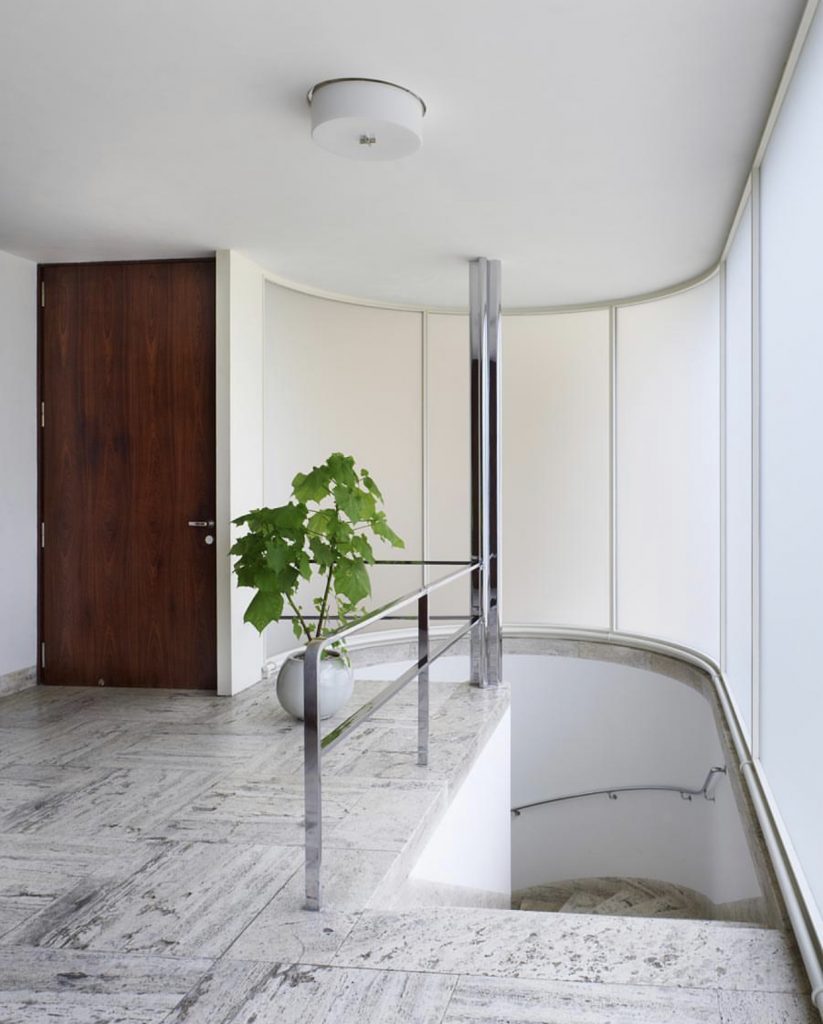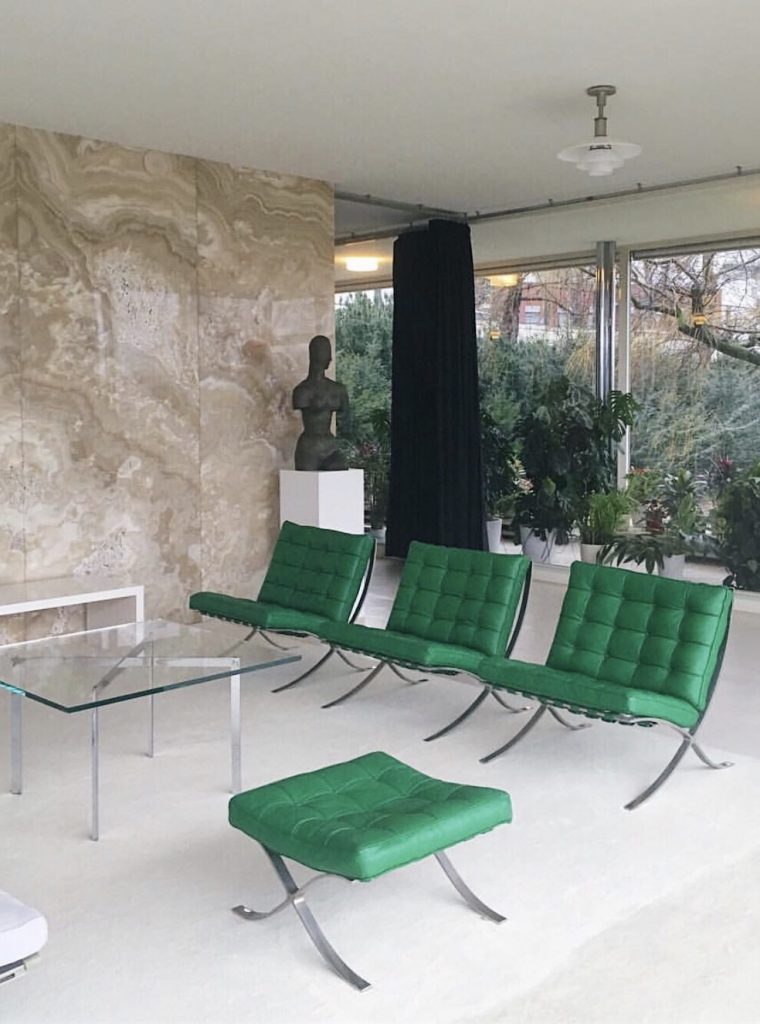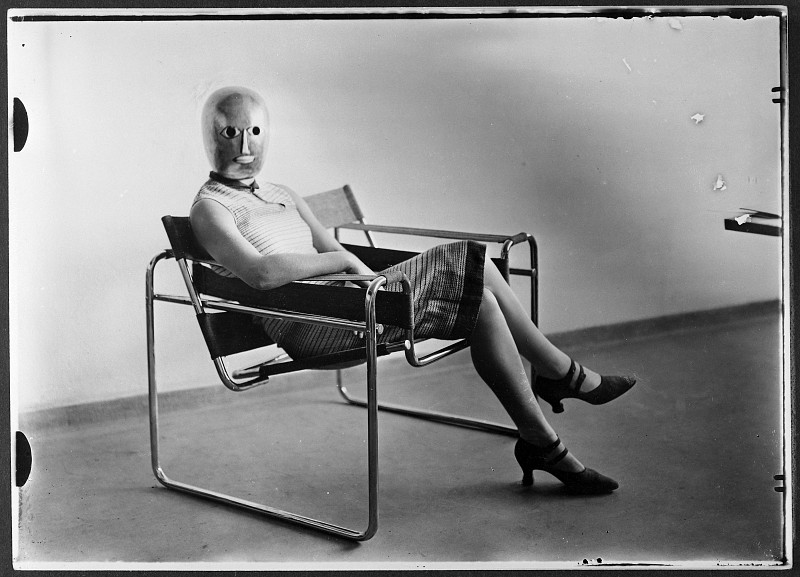This year we celebrate the centenary of the influential movement in architecture, art and design. One hundred years since its creation, the Bauhaus philosophy still defines what we consider modern and minimal and has significantly influenced our tastes in interiors, furniture and fashion. Here’s my selection of books, exhibitions and travel ideas that will give you a taste of Bauhaus 100 in 2019 and beyond.
Bauhaus 100 books
‘Bauhaus Architecture 1919-1933’ by Hans Engels and Axel Tilch

Looking for a book that will introduce you to the Bauhaus style? This one features 65 buildings in Germany, Vienna, Barcelona, Prague and Budapest, photographed by Hans Engels and arranged chronologically to track the history of the movement and its protagonists in the field of architecture.
Just to offer you a quick recap: the Bauhaus school was founded in Weimar in the spring of 1919 by visionary German architect Walter Gropius. It was based on the concept of a Gesamtkunstwerk (a total work of art), which implied combining architecture with other creative disciplines and training students to design artisanal products suitable for mass production. The rational, geometric forms of Bauhaus style were meant to be in harmony with the function of buildings and objects. This book includes examples designed by Gropius himself as well as other Bauhaus architects such as Marcel Breuer and Ludwig Mies van Der Rohe.
‘Bauhaus Women: Art, Handicraft, Design’ by Ulrike Müller

You can’t really talk about Bauhaus history without mentioning the output of creative women – artists, architects, designers and photographers who studied and taught at the Bauhaus workshops. The book profiles 20 women associated with the movement, from celebrated figures such as textile designer Anni Albers to less known names which so far have been omitted from the art history books.
Bauhaus architecture
Dessau-Rosslau in Germany

The German city that became the second venue of Bauhaus, after the school moved from Weimar in 1925, offers two architectural insights into the past and the future that are definitely worth visiting in 2019. The first one is the original Bauhaus School campus, designed by Gropius, already an iconic work of architecture with its flat roofs and glass curtain walls (innovative in the 1920s, but still looks relevant).

Photo: bauhaus-dessau.de
The second one, the new Bauhaus Museum Dessau, designed by the Gonzalez Hinz Zabala studio, will open to the public in September and host the Bauhaus Dessau Foundation’s collection of 49,000 exhibits.

Villa Tugendhat in Brno
The influence of Bauhaus spread to the nearby Czech Republic, where you can visit the restored Modernist gem designed by Ludwig Mies van der Rohe for a wealthy Jewish couple, Grete and Fritz Tugendhat, in 1930. The architect was the last director of the Bauhaus school before it was forced to close in 1933 and you can easily identify key elements of his aesthetic in the open plan, iron framework and the glass walls connecting interior to the garden.
The original setting wouldn’t be complete without furniture created by Mies van Der Rohe and Lilly Reich, including the iconic Barcelona armchairs in emerald green. Expect plenty of light and space, things that I love most about Bauhaus buildings that will likely please the lovers of architecture and minimalism.

White City in Tel Aviv

What if you fancy a getaway to warmer climes? Book your next architecture trip to Tel Aviv with its 4.000 Bauhaus buildings concentrated in the area called the White City, a UNESCO World Heritage site since 2003. Following the dissolution of the Bauhaus school and the increasing repressions from the Nazi regime, many of its Jewish students moved to the newly-founded Tel Aviv where they adapted Bauhaus principles of simplicity and functionality to the local climate. Today, it’s a city with the largest number of buildings in the Bauhaus/International style in the world. Their sun-kissed facades inspired Australian photographer Mikaela Burstow to create a series of photos showcasing Modernist details of the White City – you can see and buy them here.
Bauhaus 100 exhibitions
Berlinische Galerie

If you visit the Museum of Modern Art in Berlin in the autumn you will get a chance to see the exhibition ‘Original Bauhaus’ that aims to recount the Bauhaus legacy by presenting 14 iconic objects, each for one year of the school activity, from the Berlin’s Bauhaus archive. Works such as ‘Woman wearing a theatrical mask by Oskar Schlemmer’ will be discussed as case studies in relation to the Bauhaus Manifesto by Walter Gropius: ‘Together let us call for, devise, and create the construction of the future, comprising everything in one form: architecture, sculpture and painting.’
Museum of Fine Arts in Boston

Across the Pond, you can see two parallel exhibitions held in Boston – ‘Radical Geometries – Bauhaus Prints, 1919-33’ and ‘Postwar Visions – European Photography, 1945-60’. The first one focuses on 60 works – prints, drawings and photographs, including a series of 12 prints by Wassily Kandinsky, as well as postcards created by the Bauhaus teachers and students for the first exhibition of the movement in 1923. The second exhibition features 35 black and white photographs by mid-century photographers such as Otto Steinert, Bill Brandt and Ilse Bing, who translated the abstract language of Bauhaus into photographs of daily life and industrial objects.
For more information on Bauhaus 100 events taking place in Germany visit https://www.bauhaus100.com/the-bauhaus/









[…] in my previous post on design from Finland. The second exhibition explored the legacy of Bauhaus in Gdynia (Poland) and Tel Aviv (Israel), both cities founded between 1909 and […]